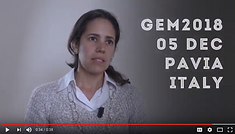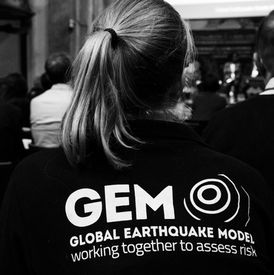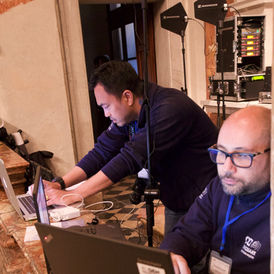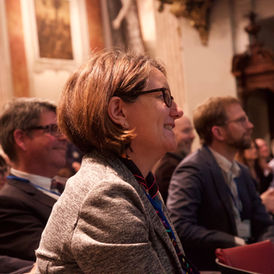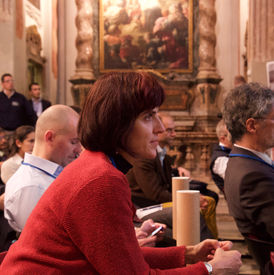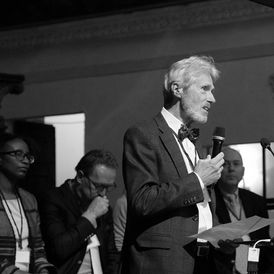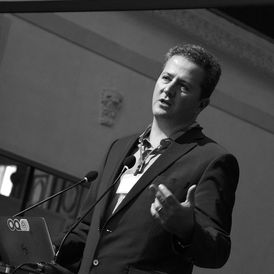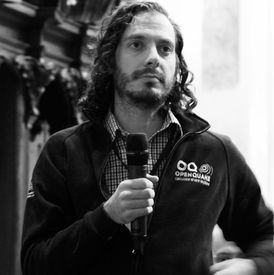Event Summary
GEM scientists presented the global earthquake hazard and risk maps in Pavia, Italy to more than 130 delegates around the world from public, private and academic organizations that participated in the GEM2018 launch on December 5th.
The maps and the underlying data behind them will enhance global disaster risk reduction strategies according to representatives of UNISDR and World Bank/GFDRR.
“This is a great contribution towards putting to the public an open data, collaborative effort with many partners on the best available data on earthquake risk around the world,” said Ricardo Mena UNISDR Chief of Support and Monitoring of Sendai Framework Implementation.
Emma Phillips, Senior Disaster Risk Management Specialist from GFDRR’s Innovation Lab added, “These products and tools that are coming out of GEM can really help in the process of making informed decisions. The way we think about risk in an open data aspect is very useful when we engage with our clients because we are able to rely on this open information that GEM provides.”
GEM, a non-profit organization that started as a pilot project in 2009, has collaborated with a wide range of stakeholders to deliver the global maps, data and analysis tools – bannered by the OpenQuake engine, the software used to run calculations and build the global mosaic of models.
Marco Pagani, GEM Hazard Team Leader, presented the global earthquake hazard map, the first of its kind since GSHAP was presented in 1999, highlighting the differences and similarities as well as the methods and tools used to complete the new map.
Vitor Silva, GEM Risk Team Leader, presented the global earthquake risk map comprised of national and regional exposure and vulnerability models. It is the most comprehensive global assessment of earthquake risk to date.
The products released at the event are as follows:
1. Hazard and risk maps (print and PDF/PNG downloadable files)
-
Global hazard map with PGA value for selected cell
-
Global exposure with number & value of buildings per country
-
Global risk map with average annual economic losses per country, link to risk profile
3. V1.0 Country Profiles for around 120 countries (PDF download)
4. Updated Active Fault Database (on github)
5. Updated vulnerability Database (300 functions)
“The GEM family is very pleased with the products that have been released today. But the more significant achievement was the process on how we got here, the principles that guided us: collaboration, credibility, openness and public good,” said John Schneider – GEM Secretary General.
More products and enhancements are planned for the next two years such as the availability of all the models in OpenQuake engine, improved exposure data and vulnerability functions as well as updated Country Risk Profiles.
Peer-reviewed technical papers for the many contributions to the earthquake hazard and risk models will be published in a special issue of Earthquake Spectra in early 2020.
LINKS
1. Introduction & Agenda
3. How we built the maps and models
4. Featured Presentations
-
Urban risk and resilience
-
Developing a National Earthquake Resilience Strategy for Canada (13MB)
-
Disaster impact and closing the protection gap
5. Global Maps, Country Profiles
7. GEM2018 Full Video (playlist)
-
Introduction
-
Global Earthquake Hazard presentation
-
Global Earthquake Risk Presentation
-
Developing an urban earthquake risk assessment capability and applications to cities in Colombia
-
Developing a National Earthquake Resilience Strategy for Canada
-
Impacts and lessons from the recent Indonesian earthquakes in Lombok and Palu, Indonesia
-
Closing the protection gap for developing countries
-
Panel 1: Uses for the maps and models
-
Panel 2: Drivers and demands for the maps and models
-
Panel 3: Future Directions for models
-
Exploring the maps
-
Breakout Sessions
-
GEM-Chinese Earthquake Administration MoU signing, and Closing Remarks
8. Flickr Photos Set 1 | Set 2
9. 5thDEC Press Release & Online News
10. Post Event Interviews
11. GEM2018 Breakout Sessions
with Prof. Iain Stewart
GLOBAL EARTHQUAKE MODEL 2018
A Step Toward Earthquake Resilience
5th of December 2018 | 0900h - 1800h | CAR College, Pavia, Italy

Collaboration and openness – keys to success
of the global earthquake model
GEM2018 In Photos
Photo credit: Ivan Sarfatti








